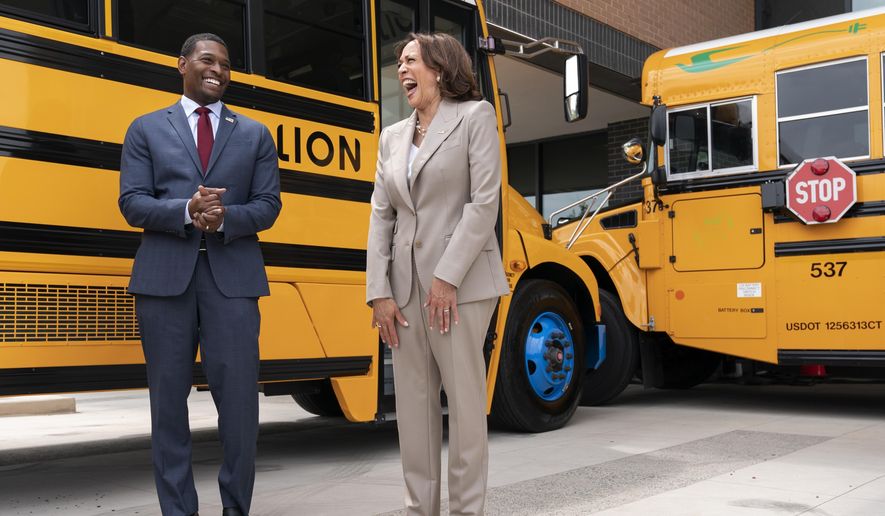The Biden administration on Wednesday identified school districts that will receive nearly $1 billion over the next year to purchase new zero-emission school buses and charging stations.
The money will go to nearly 400 school districts across 50 states, the District of Columbia and several Tribes and U.S. territories to purchase more than 2,400 clean buses, 95% of which will run on electricity. The others will operate on compressed natural gas or propane.
The funds are part of a five-year, $5 billion Clean School Bus Program created by last year’s bipartisan infrastructure law.
The administration says the initiative will bear the brunt of the cost for school districts to slash their emissions, but school bus operators are pumping the brakes on the notion they’ll be able to completely kick diesel-powered buses to the curb anytime soon.
They warned that there are a host of obstacles to overcome.
“It’s not that we can’t get there, but there are some hurdles in front of us for sure,” said Curt Macysyn, executive director of the National School Transportation Association that represents private bus contractors. “With this, there’s a whole planning aspect that’s involved with the charging infrastructure and making sure that your bus depot is capable of handling the power load to get these buses charged.”
Among the concerns is the logistics of rolling out electric fleets with limited range and charging capabilities, particularly in rural areas. Nearly all of the chosen school districts receiving the first tranche of money — 99% — serve primarily low-income, rural, and/or Tribal students.
Electric school buses made by Blue Bird, a leading school bus manufacturer, have a maximum range of 120 miles before needing to be recharged, which can take anywhere from 3 to 8 hours. The administration is kicking in an extra $20,000 for each bus purchased to put toward charging infrastructure.
Another major challenge is that roughly 40% of the country’s 480,000 school buses are owned and operated by private companies that are contracted by schools. That means they don’t have direct access to the grant money and must work with the districts to secure it, adding another layer of bureaucracy that could slow progress.
“That causes logistical problems for us,” Mr. Macysyn said. “It’s creating something that’s more complicated than it needs to be.”
Karl Simon, director of the EPA’s Transportation and Climate Division, said they designed the program with private transportation providers in mind and that the EPA is prepared to work with both them and the school districts they serve to get the money out the door.
The $1 billion plan will be announced Wednesday by Vice President Kamala Harris and Environmental Protection Agency Administrator Michael Regan in Seattle.
• Ramsey Touchberry can be reached at rtouchberry@washingtontimes.com.




Please read our comment policy before commenting.